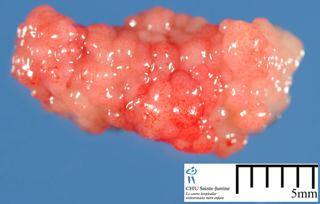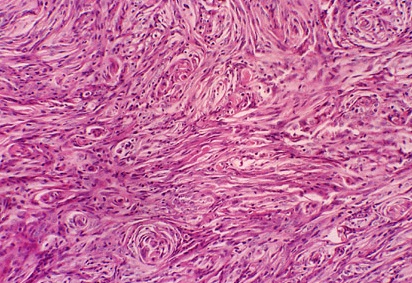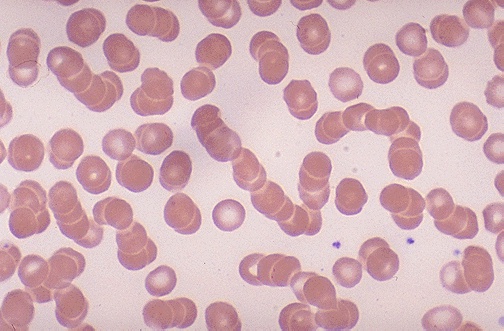- Joined
- Dec 29, 2012
- Messages
- 247
- Reaction score
- 4
68 yo male patient presents to your clinic with postprandial pain. X-ray below, whats the dx?

Mass excised from female newborn (protruding from vagina)
lithium
Bipolar?
Ebstein's anomaly (atrialization of the RV), right?
what other defect do you see with lithium as a teratogen?
None comes to mind
any good source/link to better learn ecg/ekg...i didn't know the answer to the one on the previous page. don't want to miss these questions on the real deal.
congrats on your score btw.

1. what hormone drives this tumor
2. which other neoplasms produce a similar histology finding
1. TSH?
2. Serous papillary cystadenoma of the ovary, Meningioma, Mesothelioma.
Lady comes in with pain when she eats. Decide to do a blood smear and see this. Dx?

Rouleaux? can be elevated protein or ESR, so...temporal arteritis?
Rouleaux? can be elevated protein or ESR, so...temporal arteritis?
Rouleaux? can be elevated protein or ESR, so...temporal arteritis?
Pain when she eats might be jaw claudication?
Just wondering, how were you guys able to associate rouleaux with high ESR?
In first aid, I only see it mentioned one time in the end section where it just talks about high yield points.
Did y'all just remember it from class or something?
Morning y'all!
34 y/o male presents w/ hemoptysis+cough+hematuria. see lung MRI. antibodies against which protein are likely to be elevated in this pt's serum?
General pathology section of FA
yeah i knew that temporal arteritis causes increased ESR.
i guess my understanding isn't enough to automatically associate a high erythrocyte sedimentation rate with rouleaux formation haha
alpha3 chain of collagen iv?
EDIT: wow nevermind at my last edit, i hope no one saw that lol
yeah i knew that temporal arteritis causes increased ESR.
i guess my understanding isn't enough to automatically associate a high erythrocyte sedimentation rate with rouleaux formation haha
Are you thinking Alport Syndrome? I don't think they have any lung involvement. It's mostly kidneys, ears and eyes.
Alport is alpha 5 - I'm thinking he's on the tip of goodpastures!
Alport is alpha 5 - I'm thinking he's on the tip of goodpastures!
Good point!
No he doesn't have Goodpastures, not with this type of MRI. Another hint: He has sinusitis and otitis media.
Rouleaux? can be elevated protein or ESR, so...temporal arteritis?

the only thing jumping out to me is c-ANCA.. it's screaming "pick me" "pick me" lol
nice job dude...keep it up.
next Q for the class...
1. what is this condition associated with, with respect to that organ?
2. causes of this in adults?

Yes it is Wegners and yes they have c-ANCA antibodies, you're almost there.
Against which specific cellular protein/structure are these antibodies made?
Is that a pseudocyst?

Yes it is Wegners and yes they have c-ANCA antibodies, you're almost there.
Against which specific cellular protein/structure are these antibodies made?
oh lol... it's proteinase 3 (i just added this to my first aid yesterday from a uworld question).
Although this question isn't hinting at pauci-immune mediated cresentic GN.. in that case, it would be P-ANCA (anti-myeloperoxidase)...I cheated on this one..
sturge weber
Right but what is it about struge weber that makes the patient have an increase in preload and a decrease in afterload?
